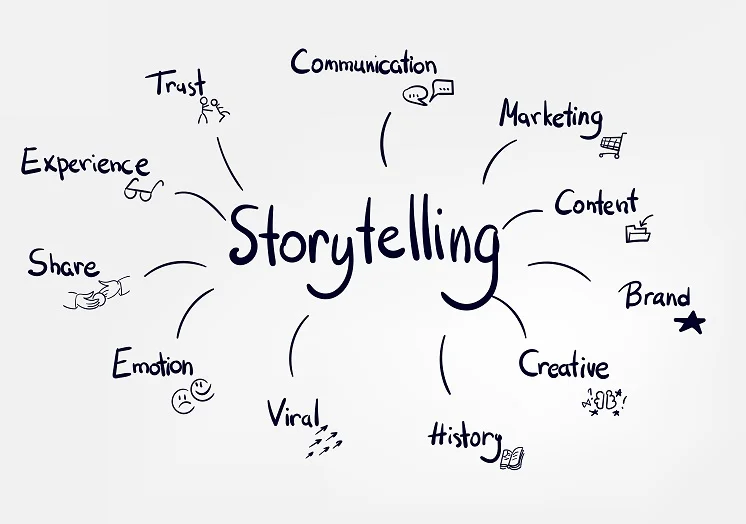Not using Stories? Your Business will Fail
Jul 25 2019 | 12:10 AM | 5 Mins Read | Level - Intermediate | Read Mode
 Joe Hyrkin CEO, Issuu
Joe Hyrkin CEO, Issuu
Connect with Author
Joe Hyrkin is the CEO of Issuu, the digital discovery and publishing platform. Joe is a seasoned entrepreneur with more than 20 years of experience. Previously, he was CEO of Reverb and also served as the CEO of SingleFeed, overseeing the firm’s acquisition by Alibaba. Additionally, he’s held top leadership positions at Gaia Interactive, Yahoo, Flickr and Virage, Inc.

In 2019 and beyond, the Stories format will continue to gain popularity and act as a foundational way for companies to create meaningful content that allows for better communication between brands and consumers, partners and potential clients, says Joe Hyrkin, the CEO of Issuu.
Last year saw the rapid rise of the Story as a dominant form of content creation, sharing and consumption; in fact, Stories creation and consumption is up 842 percent since 2016. In 2019 and beyond, the Story format will continue to gain popularity and act as a foundational way for companies to create meaningful content that allows for better communication between brands and customers, partners and potential clients.

CONTENT THAT CONNECTS: WHY INFLUENCER MARKETING IS THE FUTURE OF GEN Z ENGAGEMENT
Gen Z is a business opportunity you can’t afford to miss. As 40% of the population commanding upwards of $40 billion in spending power, modern marketers need to build compelling strategies to engage with Gen Z.
DownloadHistorically, both digital and content companies have relied on siloed tools for content creation, and consumer attraction. For example, image, video and written content have been organized through creation software, like Adobe Indesign, and bundled together and indexed by search engines that accept payment, like Google, to help drive website traffic.
As Stories gain momentum, the social media platform ecosystem is experiencing a seismic shift where redirected website traffic is being replaced as more and more platforms host their own version of Stories. These platforms, from Snapchat and Instagram to Apple News and LinkedIn, are offering the tools to create, share, and monetize content within the walled garden of their own platform, eliminating much of the need for web page platforms. Essentially, if not leveraging the Story format, the biggest players of the last 25 years will be left out of engaging with a whole new generation of content creators and sharers.
One-third of the most viewed Stories on Instagram come from businesses. Whether you’re a B2B or consumer brand, targeting millennials, gen X or even baby boomers, social media Stories have become an essential tool for engagement and growth. With 400M people using Instagram Stories, nearly 200M using Snap Stories and users spanning generations, if you’re not utilizing the power of Stories, you’re missing out on showcasing your brand on today’s modern newsstand. Stories are becoming an entrenched and relied-upon format because they are long enough to be meaningful, but not overwhelming.
Also Read: Why Authentic Storytelling is the Key to Customer Advocacy
The Benefits: Your Business Showcased on Today’s Modern Newsstand
There are major benefits that businesses of all sizes can reap by leveraging social media Stories on various platforms. First, the Stories format allows users to get more content in front of targeted audiences without cluttering up the day-to-day feed. Consumers can view an unlimited number of Story posts, such as images, videos or written content, without being interrupted by another brand’s content. As Stories are housed separately, but accessed through the profile, driving a focused Stories strategy will directly attract users and allow brands to communicate wherever their users digitally congregate.
Stories manifest in a variety of content styles, whether it be images, video teasers, one-on-one conversations, polls or written content, going even further to enable a level of consumer-to-brand interaction that is more difficult to achieve with static posts. This day-to-day contact is invaluable in growing a brands’ visibility and, in turn, its consumer base.
In addition, as companies continue to gain momentum with consumer engagement, this regular interaction, combined with a transparent eye into the brand’s mission and culture, will work to build familiarity and loyalty without demanding that the customer interact solely on its own website. Stories create a new form of engagement where consumers will begin to associate brands with their respective industries through a consistent Story style, thus becoming more top-of-mind.
Also Read: Do Social Stories Have a Place in B2B Marketing?
The Challenges: Cost and Time
While the benefits of Stories are clear, the walled garden approach does impart a massive cost on the platforms that host Stories. In order to connect with audiences across multiple Story platforms, like Instagram, Snapchat and LinkedIn, companies are forced to comply with each set of guidelines, which becomes cost-prohibitive.
It is rare that a company has the resources and time to build for each individual platform. As noted earlier, in order for a brand to connect with their audience, they’ll want to craft unique, interesting Stories that reflect their mission, values, and creativity. To be successful, brands must leverage a combination of existing and fresh marketing/advertising assets and format these Stories to be compatible with each platform.
Also Read: Unleash Your Secret Weapon: Video Storytelling. Why Is It the Future of Marketing?
The Solution: How to build your Story strategy
Developing a great Stories strategy can seem like an overwhelming task, but it all boils down to simplifying the process — finding the right solutions that allow brands to create authentic, visual and engaging Stories that can easily be shared across platforms with the click of a button.
The majority of today’s Stories are user-generated, novice content that is not necessarily brand-friendly. However, in the same way that YouTube content evolved from cat videos to semi-professional and professional branded content, the Story format is expanding beyond its original user-generated constraints.
We often misunderstand Stories to be solely a social media format. But if brands aren’t paying attention to these strategies and tools, they’re already 10 steps behind those that are and are setting themselves up for failure. Stories are not a social media trend, rather the mechanism brands will use to communicate with consumers far into the future.



